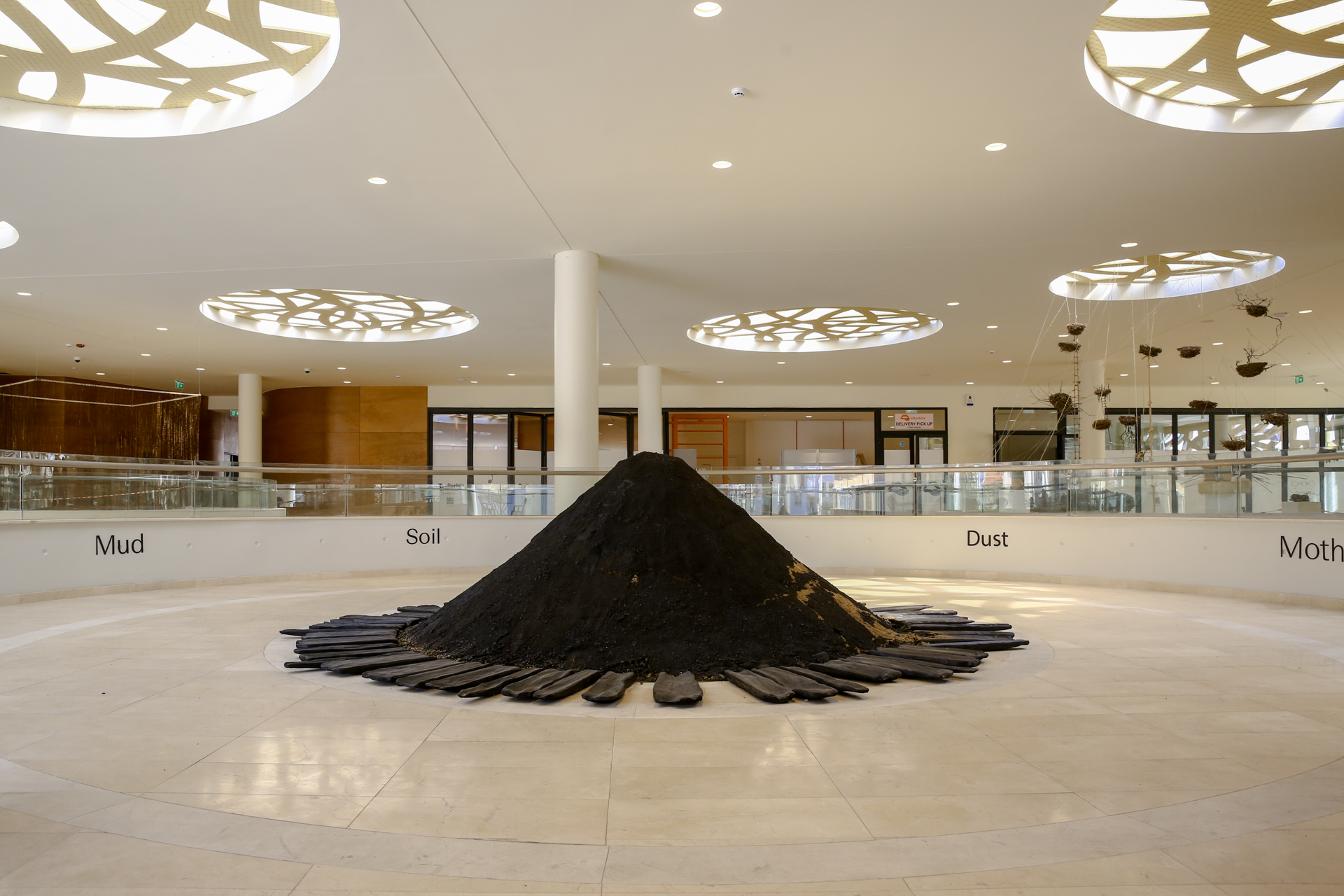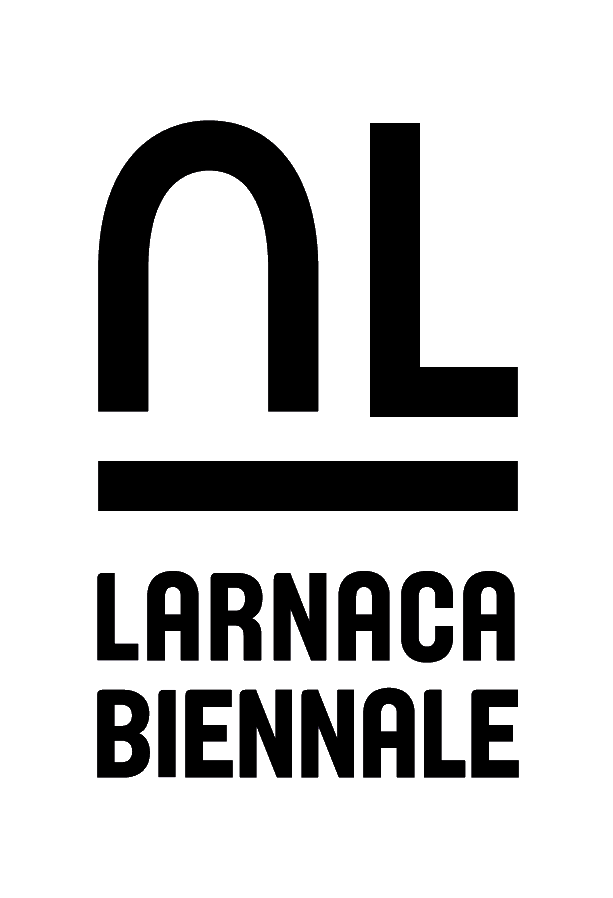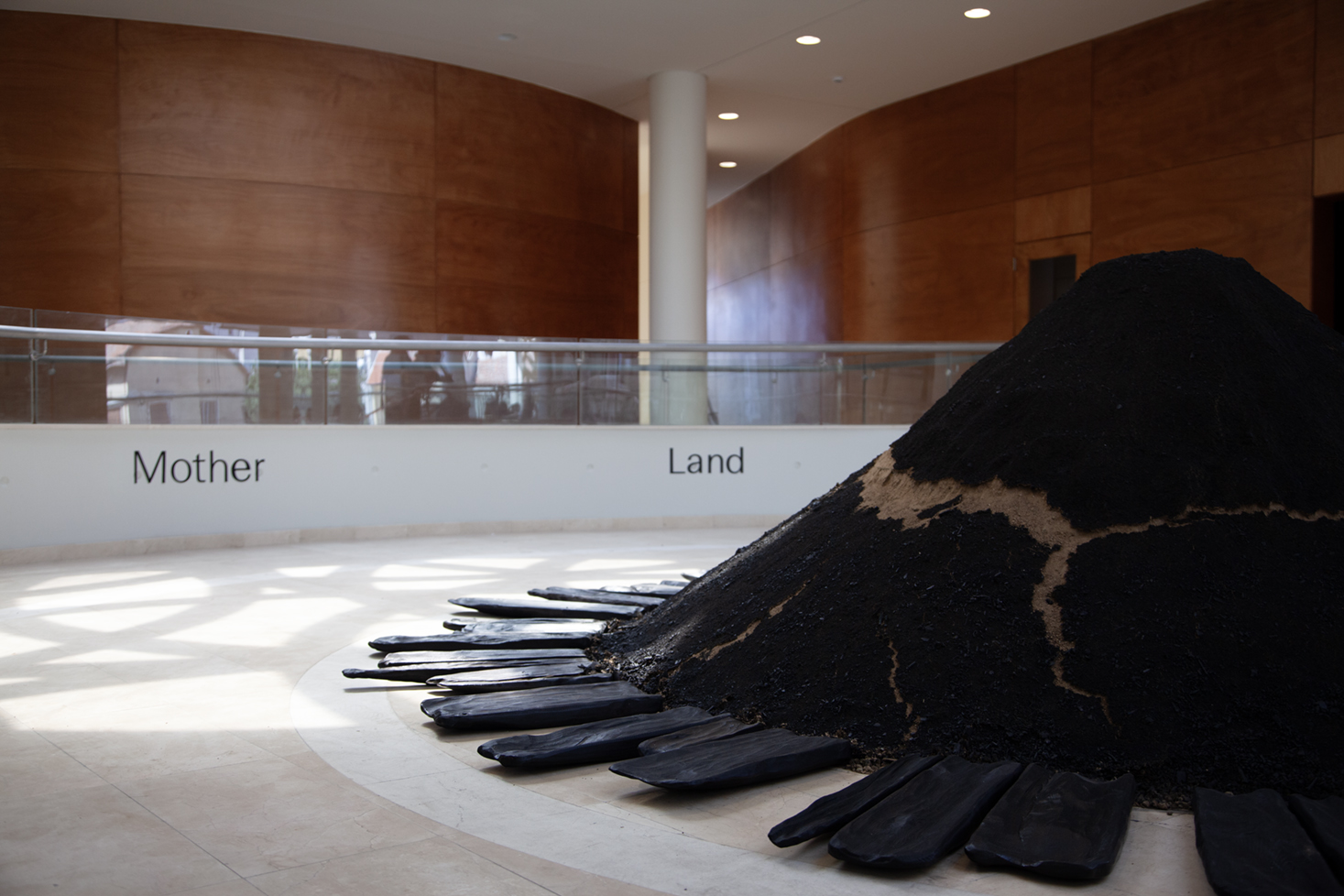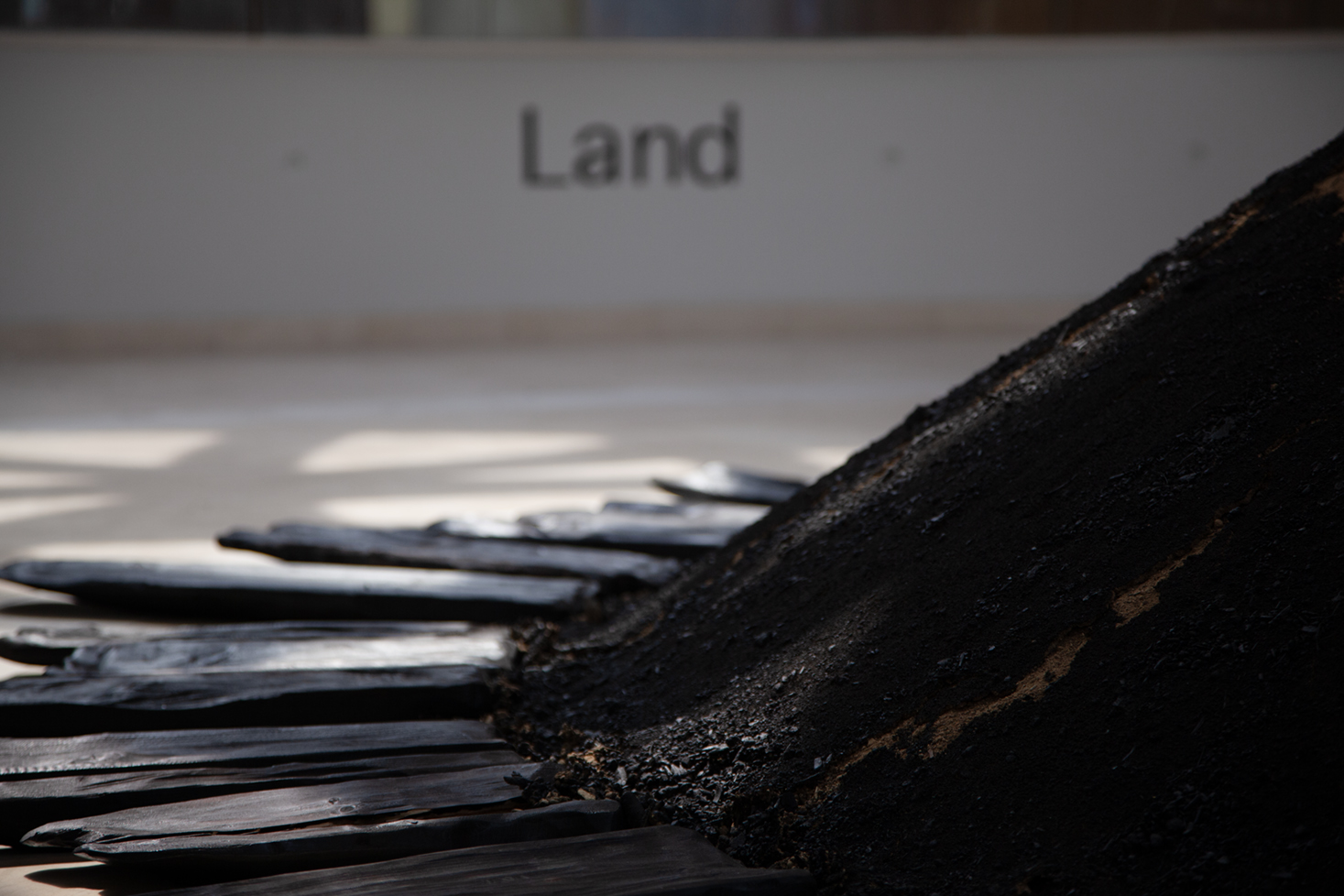Presenting Ksenja Oksin, a visual artist with a background in contemporary art, architecture, and digital media. Her work focuses on social and human issues, using diverse media to create deep connections with viewers.
At the Larnaca Biennale, Oksin presented Being-in-itself, one of the largest installations of the event. This powerful artwork—a mound of black fertile soil, Chornozem, from her native Ukraine—symbolizes home, heritage, and identity. Inspired by Immanuel Kant’s concept of the thing-in-itself, she explores how perception is shaped by personal experience, memory, and emotion. She carries a small handful of Ukrainian soil with her, a tradition that signifies connection to one’s homeland, even in displacement.
Who is artist Ksenja Oksin? Share with us a few things about you and your work in general.
I am a visual artist with a background in contemporary art, architecture and digital media. My art is focused on social and human issues and I use a wide range of media to connect to the viewer.
You participated in the Larnaca Biennale with one of the biggest installations of the Biennale! Tell us a few words about it?
My art installation is titled “Being-in-itself”. It is a pile of black fertile soil, or “Chornozem”, as it’s called in my native Ukraine, is a powerful symbol – of my country, my roots, and what my life used to be. The writings around it say “Source”, “Soil”, “Dust”, “Mud”, “Earth”, “Property”, “Home”, and “Land”. They convey all the different ways a person can perceive this soil, based on their personal experience.
The idea appeals to Immanuel Kant’s “thing-in-itself” – an object as it is, independent of representation and observation. However, our perception of the object is not independent, it is determined by feelings, beliefs, knowledge and experiences of each individual.
The one and only thing that gives me the immediate sensation of being Home, regardless of which country I am in, is the smell of wet soil after the rain. And while I cannot recreate the “Chornozem” installation in its entirety due to the EU restrictions on soil and agricultural produce import – I still have just a handful of rick black Ukraininan soil with me. It is an old tradition to bring a handful of soil as a keepsake, to carry the Motherland on a long journey. If the journey ends in the foreign land and the traveller has to be buried there, the soil of his homeland is thrown in his grave – “earth to earth, dust to dust”.
The concept of soil, of earth and Earth is bigger than a dot on the map that indicates my location. I am carrying my earth with me, the Earth carries me. We co-exist.
What was your overall impression of Larnaca and Larnaca Biennale?
I was impressed by how a comparably small team of organizers were able to pull off such a large and prominent event. In addition with artists from all over the world Larnaca appeared to be the right place for new connections. People who know and love their job always fascinate me.

A message you would like to send to artists that will apply in the future for participation in the Larnaca Biennale.
Be true to yourself, be open and honest about things you are worried about. Use your own vision. Moreover, don’t question its authenticity.


